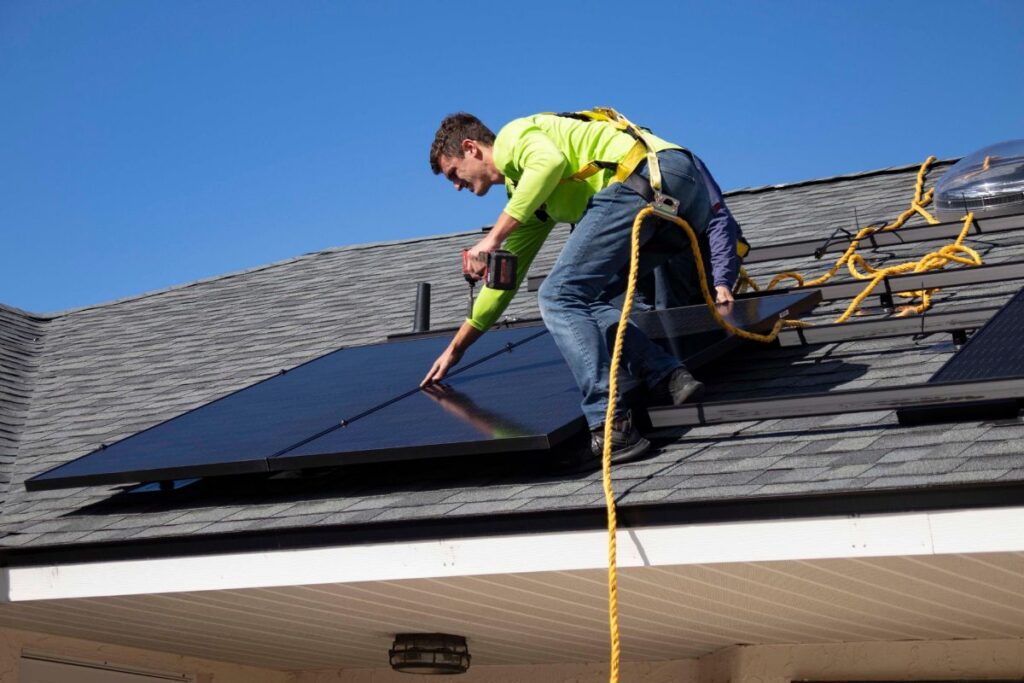In an age of increasing environmental awareness and soaring electricity bills, transitioning to solar power has become an enticing prospect for homeowners across the globe. Solar energy not only offers a sustainable and eco-friendly alternative to conventional electricity sources but can also significantly reduce your utility costs.
However, the journey to harnessing the sun’s power for your home can be a bit daunting. With the myriad of solar solutions available in the market, it’s crucial to choose the one that best suits your needs, lifestyle, and budget. This comprehensive guide will walk you through the essential steps to evaluate the right solar solution for your home, ensuring you make an informed decision that aligns with your goals.
Assess Your Energy Needs
Before delving into the world of solar energy, it’s essential to evaluate your energy consumption. Begin by reviewing your electricity bills from the past year, paying particular attention to your average monthly usage. This data will serve as a foundation for calculating the size of the solar system you require.
The size of your solar system is critical, as it directly affects your cost savings and the system’s overall efficiency. Oversizing or undersizing your solar panels can lead to inefficiencies and extra expenses. Consider factors like the number of occupants in your household, your energy-intensive appliances, and your geographical location’s solar potential.
Explore Solar Panel Types
When it comes to solar panels, you have several options to choose from, including monocrystalline, polycrystalline, and thin-film solar panels. Each type has its unique advantages and disadvantages, which you must consider to find the best fit for your home.
Monocrystalline panels are known for their high efficiency and sleek appearance. They are made from a single crystal structure, making them more space-efficient and durable. Polycrystalline panels, on the other hand, are cost-effective and slightly less efficient. They consist of multiple crystal structures, which may make them less visually appealing. Thin-film panels are the least efficient but are flexible and lightweight, offering more installation possibilities.
DIY Solar Panel Kits: A Viable Option?
While most homeowners opt for professional solar installations, the DIY solar panel trend has gained traction in recent years. DIY solar panels involve purchasing solar panel kits and installing them yourself. It’s important to know that DIY solar panels include many benefits such as cost savings, customization, learning experience, and control over the process. However, although this approach can be cost-effective it comes with its own set of challenges and considerations.
Before embarking on a DIY solar project, evaluate your skillset and comfort level with electrical work and roofing. You’ll need to assess whether you can safely and correctly install the panels, including wiring them to your home’s electrical system. Additionally, you’ll need to navigate the permitting and inspection processes, which can be complex and time-consuming.
Financing Options and Incentives
Once you’ve determined your energy needs and the type of solar panels that suit your home, it’s time to explore financing options and incentives. The initial cost of a solar system can be a significant investment, but numerous financial solutions can ease the burden.
- Solar Loans: Many banks and credit unions offer solar loans with favorable terms and interest rates, allowing you to spread the cost of your system over several years.
- Solar Leases and Power Purchase Agreements (PPAs): These options enable you to install solar panels on your property without the upfront cost. Instead, you pay a fixed monthly fee to the solar provider, who maintains and operates the system.
- Government Incentives: Governments worldwide offer incentives to promote solar adoption. These incentives may include tax credits, rebates, and net metering programs that allow you to sell excess energy back to the grid.
- Solar Investment Tax Credit (ITC): In the United States, for instance, the ITC provides a tax credit of up to 30% of your system’s cost, significantly reducing your expenses.
Selecting a Reputable Installer

When choosing a professional solar installer, it’s essential to do your due diligence. Research the credentials, experience, and reputation of potential installers in your area. Seek recommendations from friends or family who have already gone solar and read online reviews.
A reputable installer will provide a customized assessment of your home, detailing the size of the system, the expected savings, and the installation process. They should be well-versed in local regulations, permits, and warranties, ensuring a seamless transition to solar energy. Additionally, request multiple quotes to compare prices and services. Don’t be tempted by exceptionally low prices, as they may come with subpar equipment or a lack of experience. A well-established installer might cost a bit more but will offer peace of mind and a quality solar system.
Maintenance and Long-Term Considerations
Solar panels are renowned for their low maintenance requirements, but they are not entirely maintenance-free. Over time, factors like dirt, dust, and bird droppings can reduce their efficiency. Regular cleaning and occasional inspections are crucial to ensure your system functions optimally.
Furthermore, consider the long-term implications of your solar investment. Solar panels have a lifespan of 25-30 years, and you should assess whether your system will meet your future energy needs. If you plan to expand your household or increase energy usage, discuss these possibilities with your installer.
Selecting the right solar solution for your home is a pivotal decision that can lead to significant cost savings, reduce your carbon footprint, and increase your energy independence. To make an informed choice, start by assessing your energy needs and the type of solar panels that suit your home. While a DIY solar panel is an option, professional installation offers expertise and peace of mind.
Explore financing options, incentives, and government programs to make the investment more manageable. When selecting a professional installer, prioritize reputation, experience, and customized assessments.
Remember that solar is a long-term commitment, and periodic maintenance is necessary to ensure your system’s efficiency. By following these steps, you’ll be well on your way to harnessing the power of the sun and transforming your home into an energy-efficient, eco-friendly oasis. So, go ahead and take the plunge into solar energy; you won’t regret it.
Images courtesy of unsplash.com and pexels.com












